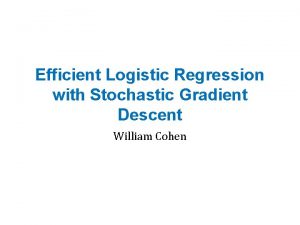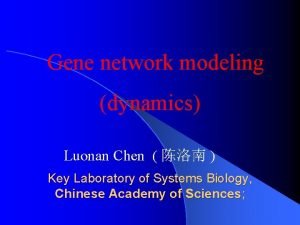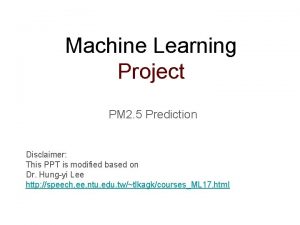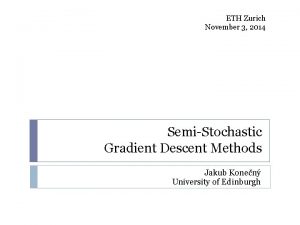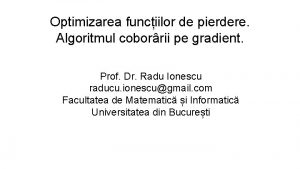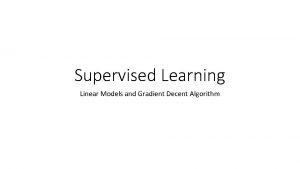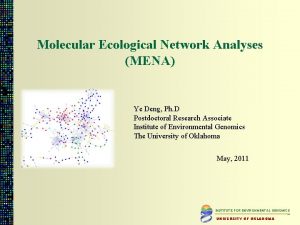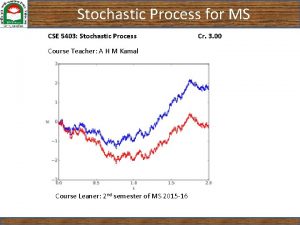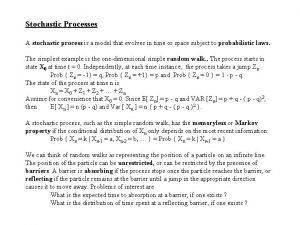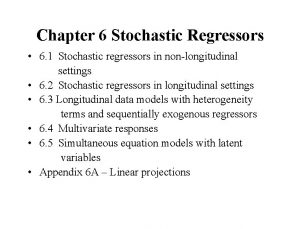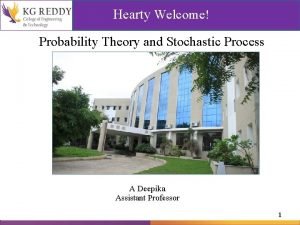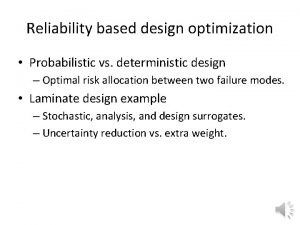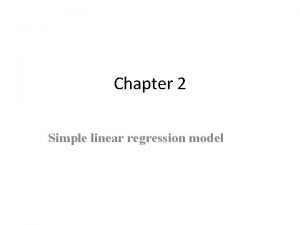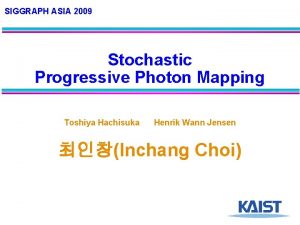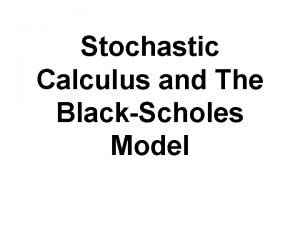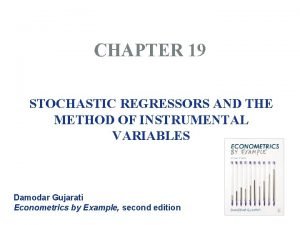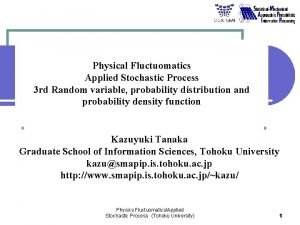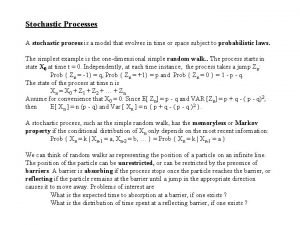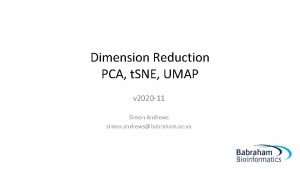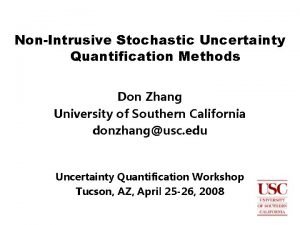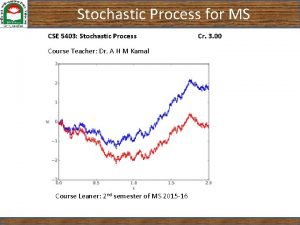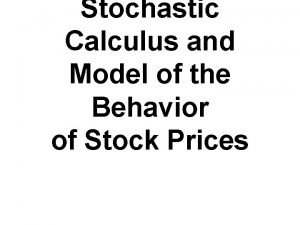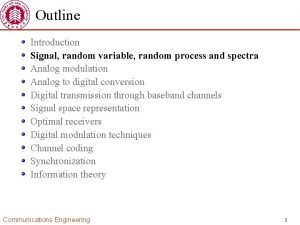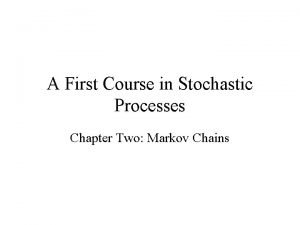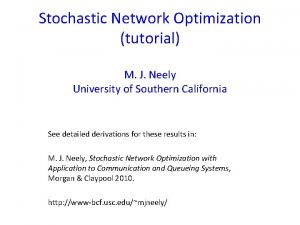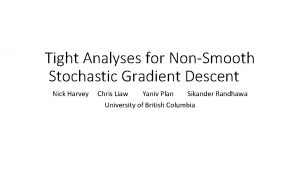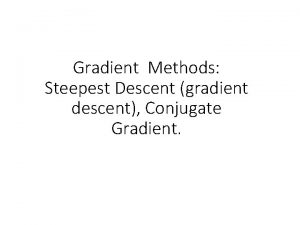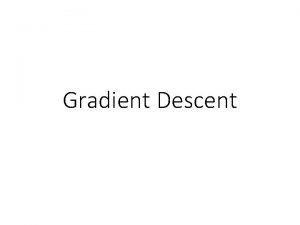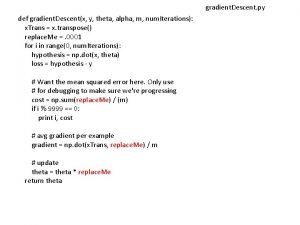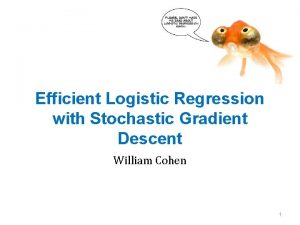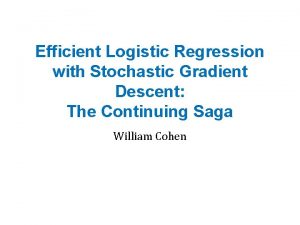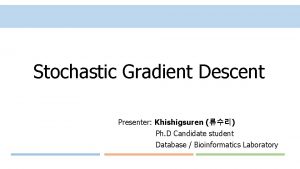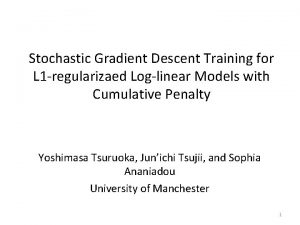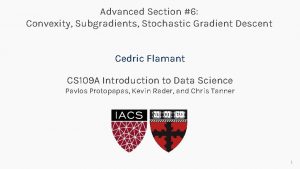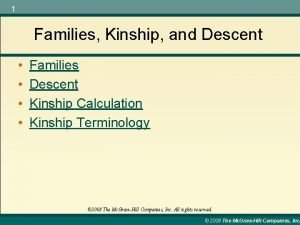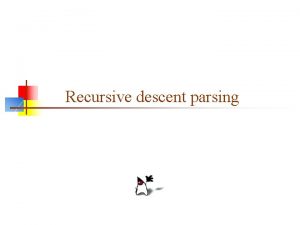Tight Analyses for NonSmooth Stochastic Gradient Descent Nick


![Shamir’s Open Questions [2012] • ($50) “What is the expected suboptimality of the last Shamir’s Open Questions [2012] • ($50) “What is the expected suboptimality of the last](https://slidetodoc.com/presentation_image_h/0b39251ce55c1ff7a8f5280d8843bb57/image-3.jpg)
![Example: Geometric Median e. g. [Cohen, Lee, Miller, Pachocki, Sidford ‘ 16] • Setting Example: Geometric Median e. g. [Cohen, Lee, Miller, Pachocki, Sidford ‘ 16] • Setting](https://slidetodoc.com/presentation_image_h/0b39251ce55c1ff7a8f5280d8843bb57/image-4.jpg)




















![Modifying the final iterate result of [Shamir-Zhang] Key idea: Recursively sum “standard analysis” over Modifying the final iterate result of [Shamir-Zhang] Key idea: Recursively sum “standard analysis” over](https://slidetodoc.com/presentation_image_h/0b39251ce55c1ff7a8f5280d8843bb57/image-25.jpg)
![Modifying the final iterate result of [Shamir-Zhang] Can modify analysis to account for noise Modifying the final iterate result of [Shamir-Zhang] Can modify analysis to account for noise](https://slidetodoc.com/presentation_image_h/0b39251ce55c1ff7a8f5280d8843bb57/image-26.jpg)







![The “Oyakodon” Theorem The Oyakadon Theorem [HLPR 2018]– a martingale concentration inequality useful when The “Oyakodon” Theorem The Oyakadon Theorem [HLPR 2018]– a martingale concentration inequality useful when](https://slidetodoc.com/presentation_image_h/0b39251ce55c1ff7a8f5280d8843bb57/image-34.jpg)



- Slides: 37

Tight Analyses for Non-Smooth Stochastic Gradient Descent Nick Harvey Chris Liaw Yaniv Plan Sikander Randhawa University of British Columbia

Importance of Stochastic Gradient Descent (SGD) • Of utmost importance in Machine Learning • Training neural networks • Minimizing convex loss functions (e. g. least squares regression) • Many TCS papers use gradient methods for combinatorial optimization: • k-server problem [Buchbinder-Gupta-Molinaro-Naor `18] • Max-flow [Lee, Rao, Srivastava `13] • But, there are still some basic questions that have been left unanswered.
![Shamirs Open Questions 2012 50 What is the expected suboptimality of the last Shamir’s Open Questions [2012] • ($50) “What is the expected suboptimality of the last](https://slidetodoc.com/presentation_image_h/0b39251ce55c1ff7a8f5280d8843bb57/image-3.jpg)
Shamir’s Open Questions [2012] • ($50) “What is the expected suboptimality of the last iterate returned by GD? ” • “An extra $20 will be awarded for proving a tight bound on the suboptimality of [the last iterate] which holds in high probability. ” We solve these problems.
![Example Geometric Median e g Cohen Lee Miller Pachocki Sidford 16 Setting Example: Geometric Median e. g. [Cohen, Lee, Miller, Pachocki, Sidford ‘ 16] • Setting](https://slidetodoc.com/presentation_image_h/0b39251ce55c1ff7a8f5280d8843bb57/image-4.jpg)
Example: Geometric Median e. g. [Cohen, Lee, Miller, Pachocki, Sidford ‘ 16] • Setting for today: Lipschitz and Non-Smooth functions

Subgradients

Strongly Convex Functions

Gradient Descent in a Nutshell Standard Convergence Rates Smooth and Strongly Convex Smooth Non-Smooth and Strongly Convex Non-Smooth and Lipschitz Standard results in non-smooth setting require averaging of iterates. Optimal for non-smooth Lipschitz functions.

Do there exist algorithms in the non-smooth setting where individual iterates converge to OPT at the optimal rate? Yes. . . [Nesterov-Shikman ‘ 15] provide an algorithm where the final iterates converge to OPT at the optimal rate. Fundamental question: do the individual iterates of GD converge to OPT? If so, at what rate?

• ($50) “What is the suboptimality of the last iterate returned by GD? ” [Shamir ’ 12]

Sub-Gradient Descent Feasible set Initial point

Stochastic Sub-Gradient Descent • SGD:

Lipschitz Functions Return Scheme Deterministic & Expected UB High Probability UB Uniform Averaging Deterministic LB Tight Last Iterate ? ? ? Tight * ? ? ? Strongly Convex & Lipschitz Functions Return Scheme Deterministic & Expected UB High Probability UB Deterministic LB Uniform Averaging Epoch-based Averaging Suffix Averaging Last Iterate Tight ? ? ? * Tight ? ? ?

Main Result 1: Lower Bound, Lipschitz case •

• Error Iteration


Why “infinitely often” and “lim sup”? •

Why “infinitely often” and “lim sup”? •

Some intuition about the lower bound… • -1 is a subgradient at 0 Takeaway: Non-differentiable points can increase the function value

How to keep increasing? v u

How to keep increasing?

Main Result 2: High prob UB, Lipschitz case •

Setup for the high probability upper bound •

Birds Eye View of Uniform Average High Prob Bound We just need a bound on the noise term!

Handling the accumulated noise Need almost sure bound on square function Azuma’s Inequality:
![Modifying the final iterate result of ShamirZhang Key idea Recursively sum standard analysis over Modifying the final iterate result of [Shamir-Zhang] Key idea: Recursively sum “standard analysis” over](https://slidetodoc.com/presentation_image_h/0b39251ce55c1ff7a8f5280d8843bb57/image-25.jpg)
Modifying the final iterate result of [Shamir-Zhang] Key idea: Recursively sum “standard analysis” over all suffixes. Error of uniform averaging Harmonic sum The analysis works for GD, but doesn’t account for the “noise”.
![Modifying the final iterate result of ShamirZhang Can modify analysis to account for noise Modifying the final iterate result of [Shamir-Zhang] Can modify analysis to account for noise](https://slidetodoc.com/presentation_image_h/0b39251ce55c1ff7a8f5280d8843bb57/image-26.jpg)
Modifying the final iterate result of [Shamir-Zhang] Can modify analysis to account for noise terms, like we did for uniform averaging: Error of uniform averaging Deterministic Error due to noisy subgradients

Handing the accumulated noise A martingale Try to bound this Sum of squared increments Cauchy-Schwarz & bounded noise

Bounding sum of squared increments • There is another option though.

Freedman’s Inequality Morally: “It is not likely that the martingale is much larger than the square root of its total conditional variance. ”

Freedman’s Inequality

A Chicken and Egg Phenomenon • Desired bound Not captured by Freedman Solution: Build our own martingale concentration inequality, specialized for “Chicken and Egg Martingales”

Martingale Variance

親子丼 Oyakodon – a Japanese rice bowl dish which contains chicken and egg.
![The Oyakodon Theorem The Oyakadon Theorem HLPR 2018 a martingale concentration inequality useful when The “Oyakodon” Theorem The Oyakadon Theorem [HLPR 2018]– a martingale concentration inequality useful when](https://slidetodoc.com/presentation_image_h/0b39251ce55c1ff7a8f5280d8843bb57/image-34.jpg)
The “Oyakodon” Theorem The Oyakadon Theorem [HLPR 2018]– a martingale concentration inequality useful when the variance is bounded by the martingale:

The “Oyakodon” Theorem vs. Freedman’s Inequality Oyakodon Theorem

Conclusions • Open questions

Thank you! Questions?
 Logistic regression stochastic gradient descent
Logistic regression stochastic gradient descent Gradient descent
Gradient descent Stochastic gradient langevin dynamics
Stochastic gradient langevin dynamics Linear regression gradient descent
Linear regression gradient descent Gradient descent rule
Gradient descent rule Batch gradient descent
Batch gradient descent Gradient descent equation
Gradient descent equation Batch gradient descent
Batch gradient descent Gradient descent multiple variables
Gradient descent multiple variables Gradient descent python implementation
Gradient descent python implementation Rhetorical choice
Rhetorical choice Icp courtage
Icp courtage Molecular ecological network analyses
Molecular ecological network analyses Thinks critically and analyses nursing practice
Thinks critically and analyses nursing practice Stochastic process
Stochastic process Stochastic process modeling
Stochastic process modeling Stochastic regressors
Stochastic regressors Stochastic programming
Stochastic programming Dn0jx
Dn0jx Stochastic vs probabilistic
Stochastic vs probabilistic What is srf in econometrics
What is srf in econometrics Stochastic progressive photon mapping
Stochastic progressive photon mapping Liabulities
Liabulities Stochastic regressors
Stochastic regressors Stochastic vs probabilistic
Stochastic vs probabilistic Stochastic process
Stochastic process Non stochastic theory of aging
Non stochastic theory of aging Asynchronnous
Asynchronnous Pca vs tsne
Pca vs tsne Introduction to stochastic processes pdf
Introduction to stochastic processes pdf Stochastic uncertainty
Stochastic uncertainty Agent a chapter 2
Agent a chapter 2 Stochastic process
Stochastic process Stochastic vs dynamic
Stochastic vs dynamic Stochastic calculus
Stochastic calculus Random process
Random process A first course in stochastic processes
A first course in stochastic processes Wan optimization tutorial
Wan optimization tutorial
